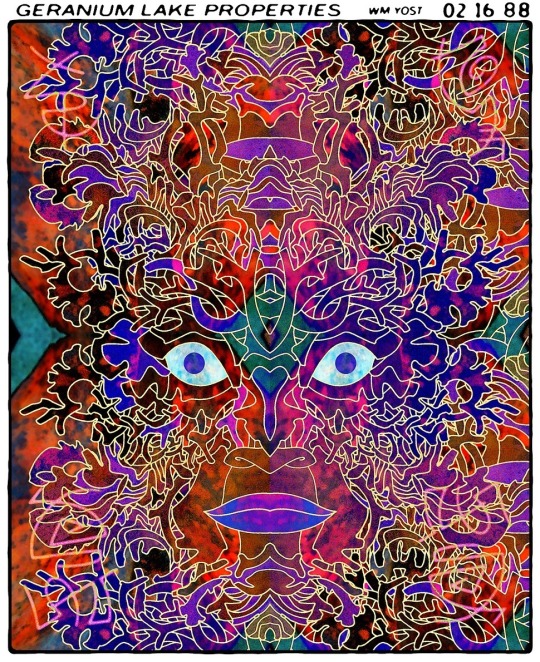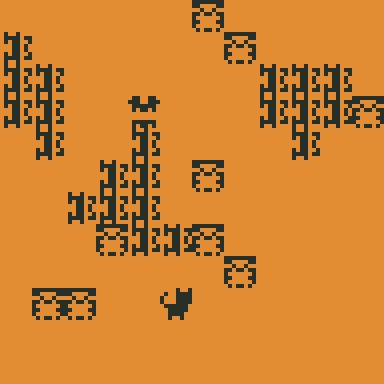#mythopoeia
Explore tagged Tumblr posts
Text
I love digging into Tolkien lore because it feels EXACTLY like doing research on any other mythology, Greek, Roman, Norse, Celtic...
You have all those big media adaptations you have to get out of your head to return to the actual sources.
You have all those epic tales and short stories and other main corpus forming the "certain" part of the text ; with then a flood of unfinished stories, fragments, drafts and other companion-pieces that either form the scholia or the apocrypha of the main texts.
You've got all the cultural parallels and mythological references begging for a mythology comparatist to come in.
You've got the complex theology and its evolution ; you've got entire maps of foreign lands you have to learn about ; you've got complicated family trees filled with characters that range from massively complex and multi-faceted to just one more name in the list.
You've got the dry scholars who enforce stern and biased beliefs ; you've got the weird fanatic groups that reinvent it all for vile purposes ; you've got your Youtube and Tumblr enthusiast who keep making their lore-headcanons ; you've got the intense debates about what is canon and what is not ; you've got people who try to share explanations about it but only massively simplify it all...
You have an entire world that had been built for decades and decades by a brilliant man, crossing all the genres from romance to tragedy passing by the epic and the fairytale ; to the point we have little bits of pieces about obscure corners of this world and some unknown character that never influenced anything in the big scope of things and yet they still have their own story...
You have heavily complex lore and background for entire cities, bloodlines, calendars, customs, laws, landscapes, and yet just as many mysteries and unanswered questions left for the imagination of those that would follow...
And as you keep digging, you find back all the elements from your favorite mythologies (Greek, Norse, Biblical, Arthurian, Finnish) but mixed together in a fresh, inventive, clever way, with tons of new inventions that became so iconic and so culturally people and so archetypally widespread... that it really does feel like you are looking at a mythology.
#this was my random tolkien appreciation post#tolkien#legendarium#lord of the rings#middle-earth#mythology#fictional mythologies#lotr#mythopoeia
108 notes
·
View notes
Text

Incantation of Creativity
Rough translation: “To all the powers of heaven and hell I plead, and to the powers of the creatures. Worldly Order weaving a decoction, a vision of form in dreams.”
#spellcraft#magick#occult#Latin incantation#grimoire#obscurum#lit#literature#medieval grimoire#demonology#angelology#theurgy#theosophy#chaos magic#chaos magick#art as magick#fabricated mythology#mythopoetry#pseudomythology#mythopoeia#fakelore#invented tradition
3 notes
·
View notes
Text
And so we come again, as so many discussions of fantasy inevitably do, to J. R. R. Tolkien. As a writer of fantasy, Tolkien hardly needs an introduction. Even before the success of the film adaptations of his work transformed him into a household name, he had won first the hearts of children with The Hobbit in 1937 and, some twenty years later, the hearts and minds of adult readers with The Lord of the Rings. But, like Coleridge and MacDonald before him, Tolkien thought deeply about his craft as a writer and creator, and it is largely by virtue of this thought that his art has achieved such timeless success. His 1939 lecture “On Fairy-Stories,” subsequently published as an essay in the 1964 book Tree and Leaf, is, as the editors of the recent authoritative edition of the essay put it, “Tolkien’s defining study of and the centre-point in his thinking about the genre [of fantasy], as well as being the theoretical basis for his fiction” (Flinger and Anderson 9). In this seminal work, he addresses all the points about the imagination raised by Coleridge and, following MacDonald, defends their application in the literary arts. We have already explored the other facets of Tolkien’s theory of fantasy as it contributes to the fantastic sublime, but I have saved his thoughts on the imagination for last, because I feel they serve as a linchpin for the fantastic sublime as a whole.
At first glance it would appear that Tolkien dispenses altogether with Coleridge’s whole tripartite scheme of primary imagination, secondary imagination, and fancy. Indeed, he takes issue with the desynonymization of imagination and fancy, though he does not single out Coleridge directly. A philologist of the highest order and sometime editor of the Oxford English Dictionary, Tolkien may be displaying false modesty when he ventures that, “[r]idiculous though it may be for one so ill-instructed to have an opinion on this critical matter, I venture to think the verbal distinction philologically inappropriate, and the analysis inaccurate” (OFS 59). Having deconstructed Coleridge’s framework, Tolkien then counters with his own, which is, by his own admission, just as arbitrary as Coleridge’s imagination/fancy divide.
The mental power of image-making is one thing, or aspect; and it should appropriately be called Imagination. . . The achievement of the expression, which gives (or seems to give) the inner consistency of reality, is indeed another thing, or aspect, needing another name: Art, the operative link between Imagination and the final result, Sub-creation. For my present purpose I require a word which shall embrace both the Sub-creative Art in itself and a quality of strangeness and wonder in the Expression. . . I propose, therefore, to arrogate to myself the powers of Humpty-Dumpty, and to use Fantasy for this purpose. (OFS 59-60)
But the advantage to this approach as both a theoretical model and a critical framework is that it separates out and clearly labels the writer’s mind (Imagination), the creative process itself (Art), and the finished product (Sub-creation). Fantasy is the end result.
Although Tolkien’s theory dispenses with Coleridge’s distinction between imagination and fancy, however, it preserves and even strengthens Coleridge’s assertions regarding the qualitative similarities between primary and secondary imagination. This isn’t immediately obvious, though the term “Sub-creation” gives us a telling hint. But to fully understand Tolkien’s debt to Coleridge, we must travel back to 1931, eight years before Tolkien delivered his lecture “On Fairy-Stories.” In that year, following a latenight conversation with his friend C. S. Lewis in which he defended the truths of Pagan myth even in a Christian world, he crystalized his thoughts into a poem called “Mythopoeia.” He quotes several lines from the poem in his lecture, and they are worth quoting here as well, for they cut to the heart of the similarity between primary and secondary imagination:
Man, Sub-creator, the refracted light through whom is splintered from a single White to many hues, and endlessly combined in living shapes that move from mind to mind. Though all the crannies of the world we filled with Elves and Goblins, though we dared to build Gods and their houses out of dark and light, and sowed the seed of dragons, 'twas our right. (Mythopoeia 61-8)
The metaphor of light that Tolkien employs here and elsewhere for the imaginative process is more vivid than Coleridge’s original distinction, but it nonetheless conveys exactly the same sense. In fact, the verbs Coleridge uses to describe the process of the secondary imagination—dissolves, diffuses, dissipates—suggest he was thinking along the same metaphorical lines. But Tolkien, usually so careful to avoid overt religious reference, here actually makes the religious and spiritual implications of the imagination more explicit than Coleridge’s “infinite I AM.” While, as we saw, George MacDonald is uncomfortable with ascribing to man the power of creation, Tolkien actually revels in man’s creative power. As in Coleridge, man’s creative power differs from that of God only in degree, hence the word “sub-creator.”
Tolkien’s vision of man as sub-creator leads him to openly challenge Coleridge’s willing suspension of disbelief. Like MacDonald, he argues that a secondary world, or sub-creation, must be governed by a certain consistency if it is to hold an audience’s attention. To him, “this suspension of disbelief is a substitute for the genuine thing, a subterfuge we use when condescending to games or make-believe, or when trying (more or less willingly) to find what virtue we can in the work of an art that has for us failed” (OFS 52). The true aim of fantasy, for Tolkien, is to draw the audience into a state of “Secondary Belief” similar to the sustained participative imagination argued for by MacDonald. The real change from Coleridge, and even MacDonald, here is that it places the burden of proof, so to speak, on the artist rather than the audience. When confronted with a good work of fantasy, the audience should not have to voluntarily suspend disbelief. Rather, “the story-maker proves a successful 'subcreator'. He makes a Secondary World which your mind can enter. Inside it, what he relates is 'true': it accords with the laws of that world. You therefore believe it, while you are, as it were, inside” (OFS 52). I can’t help but think that Coleridge would have admired the symmetry of this idea of primary and secondary belief with his own idea of primary and secondary imagination, and would have conceded the point to Tolkien. And it is here that the fantastic sublime comes into full flower.
Tolkien’s language here reflects many of the writings on the sublime, from Longinus all the way up to present critics like Robert Doran. There is a certain inexorable, inevitable, magnetic pull that surrounds works of the sublime like a gravitational field. The sublime grabs hold of readers and doesn’t let them go. It turns their gaze upward and pushes their minds and spirits to see and experience things they could not have otherwise imagined. And at the same time, it makes audiences see themselves from those same heights, see their own mortality and frailty, and want to climb higher, be greater, do better. But while traditional conceptions of the sublime see this process as occurring in flashes, as lightning during a tumultuous storm, Tolkien insists we can have more than that. In his view, we can actually live in a world, if only for a little while, where the sublime is made manifest, where it is as real as rain.
And like Coleridge and MacDonald before him, he insists that these sublime worlds are not merely the playgrounds of children, but the kingdoms of all readers, of any age. He is in agreement with Coleridge about the educational value of fairy-stories. While tepidly approving of fairy tales written specifically for children, he urges that “it may be better for them to read some things, especially fairy-stories, that are beyond their measure rather than short of it. Their books like their clothes should allow for growth, and their books at any rate should encourage it.” But Tolkien is adamant that fantasy or fairy stories (he uses the terms more or less interchangeably) should be read by everyone. “If fairy-story as a kind is worth reading at all it is worthy to be written for and read by adults,” he says, for “they will, of course, put more in and get more out than children can.” (OFS 58).
Tolkien delivered this lecture about two years after publishing The Hobbit, and just as he was beginning to work in earnest on The Lord of the Rings. While the former book is clearly a book for children, the latter effort “grew in the telling,” as he notes in the foreword to the second edition. Fortunately for the reading world, he practiced what he preached in “On Fairy-Stories.” But he did not build this world on sand. Tolkien scholars point to the medieval sources for Tolkien’s world, and rightly so, for these are indeed his secondary world’s bones and sinews. But its life-blood is, I would argue, the imaginative laws... that both create and sustain it. He took his own advice to heart and created a secondary world, Middle Earth, that has captivated and captured the imagination of millions of readers, drawing them into a state of secondary belief that, in some cases, lasts long past the reading of the books.
#Tolkien#Tolkien studies#J.R.R. Tolkien#the sublime#literary criticism#samuel taylor coleridge#suspension of disbelief#George MacDonald#the fantastic sublime#fantasy literature#fantasy genre#on fairy-stories#mythopoesis#mythopoeia#secondary belief#sub-creation
11 notes
·
View notes
Text
Posting Again
It's a return to posting after a long absence, and our first posting as the Dyad. We've a pair of poems to share today, and a remaster of an older one. It is admitted a late start to our year of writing, but its a strong part of our return. The first poem we want to share related to the time away, and is part of Alexis processing their feelings about their father's passing.
The next is a very different kind of loss but one that they are still processing none the less. We would have shared it sooner but were waiting for a very nice magazine to very politely decline it.
Finally, we have done a remaster of an old poem, there are some sinister overtones to it, as seen in the book prologue to be (dig into our Kofi to see that), but the biggest change is likely the addition of strict metre, we hope you all enjoy.
Find out more about Teryte, support us, join the community discord, or just dig more into it all.
#writing#fantasy#teryte chronicles#poetry#loss#grief#dealing with grief#dealing with loss#mythopoeia
6 notes
·
View notes
Text
If you think about it, sci-fi power creep was a thing from almost the very beginning. In August Derleth's books Cthulhu is a god, in the same pantheon as Yog-Sothoth and Nyarlathotep. But in the original HP Lovecraft books Cthulhu is a *priest* of the gods. On Earth puny humans worship him as a god, but he's really just a big slimy alien, and among his own people he's just, like, an imperialist missionary spreading the good word of Azathoth.

On pre-human Earth Cthulhu's Star-Spawn fought wars against the Great Race of Yith and the Elder Things, and while the Yith had arcane sorceries of their own, the star-faced space vegetables just had guns and bombs (and T-1000 Terminators).


6 notes
·
View notes
Text
The trouble with me trying to make a pantheon for my science fantasy world is that I want The Gods (TM) to be MYSTERIOUS and ELDRITCH and BEYOND HUMAN COMPREHENSION but I also desperately want to write a sitcom about them.
3 notes
·
View notes
Text
Fuck yeah! I just used the word mythopoeia in my English assignment!
I’m either gonna get a fantastic grade for usin’ da big words or fail because the examiner has no idea what that means lmao 🙃
#probably my favourite word#glad I got to use it#tolkien#you genius thank for making me look smart in my essay#mythopoeia#*chefs kiss*#english student#english essay#english studyblr#student#assignments#essays#coursework
2 notes
·
View notes
Text
5 notes
·
View notes
Text
A MYTHOPOEIC CAREGIVE PAEAN*
#ArtLoveInTheTimeofPalliative
————————🪷————————
Hail Paean, Asclepius, most famous divinity, hail Paean
From him descend Aceso and Iaso, hail Paean - and fair-eyed Aegle and Panacea, children of Epione, along with shining Hygieia, the all-famous - hail Sophia, hail Thanatos - hail Paean, Asclepius, most famous divinity, hail Paean
To the divinities of curing, healing, the radiance of the all-cure, and to the sweetness and shining of health - and to the mother wisdom and to the inescapable final rest - hail Paean
————————🎨 ————————
Utilizing readily available and simple personal and intimate objects found at home, like purple medical gloves, wilted flowers from a dried-up bouquet, a plastic doll, and a religious effigy bottle; and reworking them thus as resonant and visual sacred poetry and hymns; and fragile votive offerings; to the Asclepius family of Greco-Roman gods and goddesses; divine healers and carers who could be both compassionate and entropic in their ways.
*a reworking of the Erythraean Paean to Asclepius c. 380-360 B.C.E.







#mythopoeia#mythology#art#palliative care#Asclepius#Hygieia#Panacea#Iaso#Aceso#prayers#healing#love#mother#family#Sophia#Thanatos
6 notes
·
View notes
Text
Non Nostri Chaos Circulus
I have seen this Geranium Lake Properties comic identified many times as Mother Jackal in her guise as the Rescuer of Witches, so the first thing I want to say is, this mask is NOT THAT. This panel happened in the middle of “The Numerous and Numinous Satisfactions of a Belletrist”, an adventure where everybody in that tale (except Jack Loki and Alice Aroumbeyski) mistook Iffareesha* for Mother…

View On WordPress
#abstract comics#artifact#asemic#asemic writing#chaos#esoterica#geranium lake properties#glp#hecate#Latin#lcmt#lin tarczynski#masks#moss folk#mythopoeia#poetry comics#vispo#visual poetry#visual poetry comics#witches
3 notes
·
View notes
Text
Effoliate the Tree of Tales
It's Tolkien Tuesday on Twitter with a theme of "trees," and I thought I'd share my thoughts from there on tumblr as well.
These days the first tree that comes to mind when I think of Tolkien is perhaps an odd one: the Tree of Amalion, a "tree of tales" which Tolkien drew at least three times. This one (which I saw in person!) is my favorite.

Dated to the time of the writing of The Lord of the Rings, The Maker of Middle-earth exhibit catalogue describes it as "a representation of the stories and poems that arose in [Tolkien’s] mind but required uninterrupted time and concentration to bring to fulfillment: luxuries which, as a conscientious academic and devoted husband and father, he did not possess." By the time of The Lord of the Rings, Tolkien seems to have become aware that there were tales he would never live to tell—his fate, after all, would be the fate of all Men.
There are at least two other versions of this tree, and the one on the left is probably the one most people are familiar with since it appears on the cover to the 2001 HarperCollins paperback edition of Tree and Leaf—quite a fitting choice!


But this type of iteration and variation goes deeper than iterations of the entire tree. On each tree no two flowers are alike, and yet each is a new combination of the colors and shapes present in the other flowers. Variation. Adaptation?



Diversity in creation is inherently good (consider Melkor's repetitive additions to the music as they attempt, like a cancer, to drown out the variety of the voices around him). Even more than inherently good, diversity may be necessary. The splintered light that is "endlessly combined in living shapes that move from mind to mind" in Mythopoeia is positive, even if the the splintering, itself, can be cast as negative, providing for Creation what Verlyn Flieger in her book Splintered Light calls the "absolute necessity of change." Meanwhile, Jonathan McIntosh in The Flame Imperishable points to humanity as a necessary participant in Creation who through myth-telling allows "reality for the first time [to come] into its own, accomplishing by God’s own ordination the ‘effoliation and multiple enrichment of creation,’” a reference to "On Fairy-stories."
Is this why “things more beautiful” (per Manwe) are “more” beautiful? The “more” first qualifies not quality, but quantity. The addition of “more” beauty (quantitatively) to the pattern creates a pattern that is “more” beautiful (qualitatively).
“Effoliate” is a rather archaic botany term that means “to open into leaf.” And here we make the jump from image to image—from light to trees—as metaphors for the reality-completing act of subcreation. The jump is not far: light and trees are already linked in Tolkien. All manner of human creative activity can be represented in these two images.
In my blog's drafts folder is a post titled "The Infinite Variety of God: The Evolutionist and The Creationist Visit Middle-earth" about the Tree of Amalion, fanfiction, and this line from "On Fairy-stories." One important point from it: every act of creation (in the world as we know it) recombines already existing objects/symbols/ideas into new configurations. The new configuration is a new thing in and of itself, but it is built from "colors" and "shapes" that predate it. Fanfiction is a variation on this process that is (very generally) situated within particular social and economic boundaries. The "colors and shapes" that are used as the building blocks in the creation of fanfiction may be more complex or recent than more generalized tropes, symbols, and conventions used in "original" works, but every act of written sub-creation ("original" or "fanfiction") draws on what came before it right down to the conventions of story-telling, symbolic associations, and a shared understanding of words themselves.
The Tree of Amalion represents this very process: the colors and shapes of one story are recombined into something else, something that references and reflects but splinters and evolves, actualizing Creation as only The Children and the infinite variety of sub-creation can.
So go write your fanfic!
Effoliate the Tree of Tales.
And if anyone complains, tell them you’re doing the Lord’s work.
#tolkien#The Silmarillion#Tree and Leaf#On Fairy-stories#Mythopoeia#Tree of Amalion#tree of tales#effoliation of creation#fanfiction#transformative works#splintered light#trees#The Flame Imperishable#Splintered Light: Logos and Language in Tolkien's World#tolkien studies
18 notes
·
View notes
Text
Just a heads-up for speculative biology

While I am still researching and seeking ways to incorporate even more flavour into 16^12 as a documentation atlas / encyclopedia-worthy setting guide overall (especially over alternative technologies, linguistics & cultures), I figured that a bunch of people could really appreciate some more speculative biology resources, games and a handful of considerations / suggestions over lesser-known topics of world building related to such worth considering.
Starting by providing external resources with a couple YouTube channels and some other related resources:
There are way more, but those should give you great insight into the process of speculative contemporary biology as we are aware of right now.
Now, as for my own suggestions, beware that they mostly pertain to foreign time-wise "ecological niches" if you even can call such existential domains that. Either mythologically-inclined, automated lively constructs or literally far, far ahead in time.
Cosmogony & early mundane life suggestions

For ease of reach, I will use the Christian + Hellenistic Classical Greece mythology as a referee guide for meta-physical representation. Could be any mythos, invented or real, it is all true if you count the whole of existence for all I care. But that specific one is one that most people here reading this would know of.
So the creation of the Universe, Earth, Eden and the War in Heaven between Lucifer and Saint-Michael (so not the Apocalyptic scripts, that's custom-tailored flattery fan-fiction by my worldview but whatever...) feels like a logical progression of steps where a root system (some call it God, I call it the existential root likewise to how it is shown on Linux he-he-he) divides themself into smaller and smaller units (first into grander agents and going ever so smaller down to the smallest of axioms...), and then those divide the world into domains of their choosing and executing roles / functions across the wider cosmos...
Sounds like a computer bootstrap process, doesn't it? Well yes, but it is also akin to the ecological niches and adaptation process of what we are most aware of as life that you can emulate and customize as you wish to if you so desire.
You can also extrapolate / interpolate from such a divine / ethereal starting point and make them have all kinds of children species, automata and lifeforms. I would advise going through an "Angelic Constructs" to "Transformers" route for the first mundane plane lifeforms, kinda similar in agency and functionality as our early analogical robotics, both emulating the process of a child learning by playing with toys and also starting very simplistic (like how the simple rules of a cellular automaton like Conway's Game of Life may result in very complex behaviours on the grid) until they build on top of each other significantly.
But you can do whatever you so desire, as the reference model does divide some of the upper tier angelic court beings into themes or existential roles (and does the same for those of whom from such who became upper level Hell governors). It is simply a strong recommendation to emulate the iterative process of life and agency, as that builds a strong world-building cohesion and nuanced depth to the set of variables you tinker with as a creative, engaging people further into its intricacies.
Elderly universe

As I apply the same rules over and over again, I tend to figure historical patterns (likewise to those of sound-tracker's music) and re-utilize the content I enjoy most where relevant. That's part of my research and iterative process. And it turns out that as I feel (and went through several psychic experiences) around and about far futures, it mostly sticks to some vague approximate guesses I make.
Granted, I will definitely make use of some mystery, secrets and quantum choice principles across for the things I am really out-of-reach for knowing, but I can give you some subjective tips of mine to derivate cosmically far futures that both works realistically and feel great to tell exaggerated stories over. (Not always needs to invoke eldritch by any means too, I prefer to give a more nihilistic-optimistic yet esoterically-grounded take on things because I am somewhat tired of dark and dire traumatisms-centric stories of contemporary times)
First, I persist into assuming there are sapient lifeforms (mechanical and divine ones are guaranteed) of some kind across the full spectrum of time. Granted, I have bold vision even for humans and other fully biological intelligent folks to survive even past the red dwarves' major era death into the iron stars period, even without involving much use of magic in the setting period. But it is worth keeping somewhat because entirely lone sapient individuals in such a late era don't exist in a vacuum and needs a few things to persist there for longer than a couple of minutes.
Second, on the same vain I tend to have at least one major native species of this time-wise era either they are time-travelling dwellers, timeless beings or just sapient individuals who stuck around as species for that long. It really gives a vibe of being so elderly as a universe, with cultures, languages, history, knowledge and nuances worth investigating. It is a mechanic I will take full advantage of into my very own worldbuilding if you are curious.
Third, consider realistically "conservative" (as in, with the least change involved) estimates of history, entropy and perhaps timely tourism into consideration for your world(s) and interpolate relevant data for such as needed. There are still going to be changes across the board in the broad spectrum of time, but I would guess that somewhen things will settle down (or at least lower the variation / valence and quiet somewhat more compared to the current cosmos we live in) as the universe becomes less habitable for our definition of life, which are really intricately complex and sophisticated lifeforms.
It really goes to show that if one can imagine / ask a question about anything, it is real somewhere in the whole of existence (perhaps you prefer calling it an omniverse, but not me). And, in this instance, that reinforces the notion that there may be a handful of tourists into the edge periods of time present for all sorts of reasons, no matter how sparse or few of them there may be. Also, it applies the other way around too, especially as my story has a certain emphasis unto a (younger than the elderly majority peers, aka a late teenager / young adult) character agent who wraps back in time for quite mundane reasons really...
Thanks for reading this messy info dump (initially meant to be a shorter article production than the other articles I had in my drafts, oups...) and I wish you good luck.
#youtube#speculative evolution#speculative biology#maskoch#worldbuilding#world building#mythos#mythology#mythopoeia
5 notes
·
View notes
Text
BOOK LAUNCH
The time has finally arrived: something I wrote is being published! Click below to read all the full details on how to read my soon-to-be-released short story, RABELLAH AND THE CARPENTER: A MYTH OF ADA'MAH. #amwritingfantasy #Jewishfantasy #musings
The time has finally arrived: something I wrote is being published! As some of you may recall, I mentioned how I graduated from a little program where I obtained my certificate in written storytelling through the Story Center in partnership with Metropolitan Community College. What I hinted at, though, and can finally share in full details, is that as a graduate, they will be publishing my short…

View On WordPress
#am writing#am writing fantasy#fantasy#Jacob and Rachel#Jewish#musing#Musings#mythopoeia#SFF#short story#writing
4 notes
·
View notes
Text
The Truth Of Fiction Is Thru The Use Of Fiction We Tell The Truth
0 notes
Photo
“You look at trees and label them so, (for trees are ‘trees’, and growing is 'to grow’); you walk the earth and tread with solemn pace one of the many minor globes of Space: a star’s a star, some matter in a ball compelled to courses mathematical amid the regimented, cold, inane, where destined atoms are each moment slain.
Yet trees are not 'trees’, until so named and seen– and never were so named, till those had been who speech’s involuted breath unfurled, faint echo and dim picture of the world, but neither record nor a photograph, being divination, judgement, and a laugh, response of those that felt astir within by deep monition movements that were kin to life and death of trees, of beasts, of stars: free captives undermining shadowy bars, digging the foreknown from experience and panning the vein of spirit out of sense. Great powers they slowly brought out of themselves, and looking backward they beheld the elves that wrought on cunning forges in the mind, and light and dark on secret looms entwined.
He sees no stars who does not see them first of living silver made that sudden burst to flame like flowers beneath an ancient song, whose very echo after-music long has since pursued. There is no firmament, only a void, unless a jewelled tent myth-woven and elf-patterned; and no earth, unless the mother’s womb whence all have birth.”
–J.R.R Tolkien, “Mythopoeia”

CLADISTICS ruined my life
114K notes
·
View notes
Text
0 notes